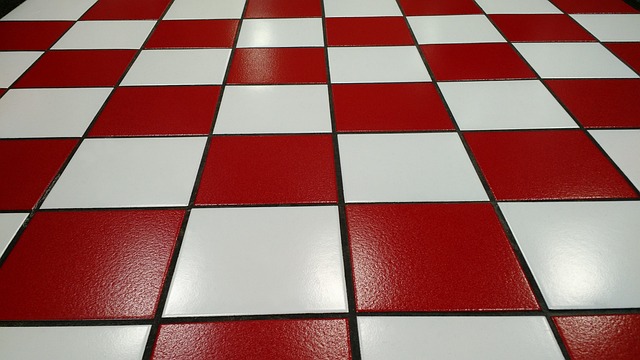Grout stain removal presents challenges due to grout's porous nature, absorbing various stains. Preventative measures like regular cleaning with appropriate products are key. Choosing the right cleaning agents, such as pH-neutral or enzyme-based options, is crucial. Effective scrubbing techniques involve wetting areas, applying stain removers, and using baking soda pastes. Steam cleaning offers an eco-conscious approach by penetrating grout lines for deep cleaning. Chemical solutions target severe stains with strong alkaline/acid components. Natural remedies like baking soda, vinegar, or lemon juice handle minor stains gently. Preventing stains through regular cleaning and sealing prolongs grout's cleanliness.
Tired of dealing with unsightly grout stains? This comprehensive guide offers effective solutions for achieving sparkling, stain-free grout. We delve into the root causes of grout stains, exploring factors like mold, mildew, and everyday spills. Next, we provide expert advice on selecting the right cleaning agents and scrubbing techniques to tackle tough stains. From powerful steam cleaning methods to natural remedies and preventive tips, discover proven strategies for efficient grout stain removal and maintain a fresh, clean look in your spaces.
Understanding Grout Stain Causes

Grout stain removal is a common concern for many homeowners due to various factors contributing to unsightly discolouration. Understanding the causes behind grout stains is the first step in finding effective solutions. Grout, by nature, is porous and susceptible to absorbing stains from sources like dirt, grime, mould, mildew, and even oil or grease splatter. These contaminants can penetrate the grout lines, leading to staining over time. Additionally, grout’s proximity to kitchens and bathrooms makes it more vulnerable to water damage and mineral buildup, which can further exacerbate stain issues.
Regular cleaning and maintenance are essential to prevent grout stains from forming in the first place. This includes using appropriate cleaning products and techniques tailored for grout. Knowing how to address grout stains promptly is also crucial. Quick action can often prevent minor issues from becoming more severe, ensuring that your grout remains looking fresh and clean.
Choosing the Right Cleaning Agents

When it comes to tackling grout stain removal, selecting the appropriate cleaning agents is a critical first step. The right choice can make all the difference in effectively eliminating stubborn stains and restoring your grout’s freshness. Firstly, consider the type of grout you have—natural stone, ceramic, or porcelain—as different materials may require specialized care. Natural stone, for instance, needs pH-neutral cleaners to avoid damaging its surface.
Secondly, understand that bleach is a popular choice for grout stain removal due to its powerful bleaching properties. However, it’s essential to use it cautiously, especially in areas with direct sunlight, as it can cause fading. Alternatively, enzyme-based cleaners are effective and safer options, breaking down organic stains without harsh chemicals. Always test any cleaning agent on a small, discreet area first to ensure it doesn’t cause discoloration or damage.
Effective Scrubbing Techniques

When it comes to effective grout stain removal, proper scrubbing techniques are paramount. Start by wetting the grout areas with warm water to loosen any built-up dirt or debris. Then, apply a high-quality grout stain remover following the product’s instructions. Utilize a stiff-bristled brush or sponge to gently scrub away stains, ensuring you reach all nooks and crannies.
For tougher stains, consider using a combination of baking soda and water paste. This natural cleaning agent is gentle on grout yet powerful in eliminating stubborn marks. Apply the paste, let it sit for several minutes, then scrub thoroughly with a damp cloth or sponge. Rinse well with warm water and dry to reveal clean, stain-free grout.
Steam Cleaning: A Powerful Method

Steam cleaning has emerged as a powerful method for grout stain removal, offering an effective and eco-friendly solution. This technique utilizes high-pressure steam to penetrate deep into grout lines, breaking down and removing stubborn stains without harsh chemicals. The steam softens and dissolves dirt, grime, and even mold, allowing for easy extraction with minimal effort.
Compared to traditional cleaning methods, steam cleaning provides a deeper clean by reaching the root of the problem—the grout’s porous structure. This method is particularly advantageous for addressing difficult-to-remove stains caused by years of buildup or stubborn marks from various substances. By choosing steam cleaning, you can restore your grout to its original condition, ensuring a longer-lasting, fresh-looking finish without resorting to aggressive chemicals.
Chemical Solutions for Deep Cleaning

Chemical solutions are highly effective for deep grout stain removal, especially in addressing ingrained dirt, mold, and mildew. These powerful cleansers penetrate deep into the grout lines, breaking down and eliminating stubborn stains. They often contain strong alkaline or acid components that effectively dislodge grime and restore the grout to its original state.
When using chemical solutions for grout stain removal, it’s crucial to follow safety precautions. Always wear protective gear like gloves and a mask. Ensure proper ventilation, as these chemicals can have strong fumes. Test the solution on a small, inconspicuous area first to check for any adverse reactions with your grout material before applying it more broadly.
Natural Remedies for Mild Stains

For minor grout stain issues, there are several natural remedies that can be effective in removing them before they set. One popular option is to use a mixture of baking soda and vinegar. This combination creates a gentle yet powerful cleaning agent that can tackle light stains. Simply sprinkle baking soda over the stained area, then pour white vinegar over it to create a fizzing reaction. Let the mixture sit for a few minutes, and scrub gently with an old toothbrush or sponge. The acidic properties of vinegar help dissolve mineral deposits and grime while the baking soda acts as a gentle abrasive.
Another natural grout stain remover is lemon juice, which contains citric acid that can cut through stains. Apply fresh lemon juice directly to the affected area and let it soak for around 30 minutes. You can also mix it with water or baking soda for enhanced cleaning power. After soaking, scrub the stained grout thoroughly and rinse well. These natural methods are not only cost-effective but also environmentally friendly alternatives for mild grout stain removal.
Preventive Measures and Maintenance Tips

Preventative measures are key when it comes to grout stain removal. Regular cleaning with a mild detergent and a soft-bristled brush can help keep stains at bay. Additionally, sealing your grout after installation or renewal with a high-quality sealer will create an impenetrable barrier against dirt, oil, and other stain-causing elements. This step is especially crucial in areas prone to moisture or heavy foot traffic.
For maintenance, it’s recommended to address any leaks or spills immediately to prevent staining. Using absorbent materials like paper towels or microfiber cloths to blot liquid messes can minimize the risk of deep penetration. Furthermore, periodically reapplying grout sealer every 6-12 months will ensure ongoing protection, making future grout stain removal easier and less intensive.
